Experiences must be lived to effect real change: It is hard to understand and empathize with something one has never encountered firsthand.
Lost in Ana's mirage
This project makes use of interaction design principles to dive into the experience of having Anorexia Nervosa (AN) through an immersive exhibition. By focusing on one of the most overlooked symptoms: cognitive distortion, the exhibition offers participants insights into the psychological and emotional aspects of the disorder. Utilising a co-creative approach that involves stakeholders such as recovered patients, healthcare professionals, and family members, the exhibition is designed to foster understanding and empathy for individuals with AN. This experience goes beyond traditional exhibition formats by integrating multi-sensory and interactive elements that engage visitors in a 3-part narrative engaging with struggle, reflection, and recovery, challenging common misconceptions and aiming to bring forward supportive community dialogue. Overall, this projects makes use of the interactive exhibition format to vividly foreground often overlooked symptoms of one of the world’s deadliest mental disorders.
Background
With a death every 52 minutes, eating disorders rank as the most lethal among psychological illnesses. Despite widespread misconceptions linking the condition to vanity and extreme thinness, less than 6% of patients are underweight. This project focuses on Anorexia Nervosa (AN) and Atypical Anorexia Nervosa (AAN), collectively called Anorexia or AN.
The DSM-V diagnostic criteria for Anorexia Nervosa (AN) primarily centers around eating behavior and body image distortions. However, these symptoms often receive strong attention, leading to an excessive emphasis on physical aspects during treatment. This skewed focus contributes to a limited understanding of the pathogenesis of such eating behaviors. Furthermore, prevailing stereotypes about the illness contribute to a knowledge gap concerning the experience of having anorexia, perpetuating the misconception that it is a matter of choice.
The installation focuses on the pervasive “Anorexic Voice” or “Ana’s Voice,” an auditory hallucination, that dominates the thoughts and behaviors of patients, playing a crucial role in both the perpetuation and recovery from the disorder. Hereby mimicking the dynamics of an abusive relationship, this voice is a major symptom contributing to the development of the disorder and contains many challenges within the recovery process.
It has been proved that recovery is facilitated by supportive relationships, such as with family and friends. For that support to be effective, it is necessary for communities to develop a better understanding of the disease, which includes a shared experiential comprehension of its different tenants.
The experience
The exhibition unfolds through three rooms, each offering a different lens into the world of someone grappling with anorexia. From the dysphoric mood to the struggle and emergence into recovery, participants encounter an interactive narrative, that follows a traditional three-act structure.
Room One: Decadency
Participants enter the first room to find themselves in a space where they initially engage as passive observers, witnessing the early stages of Ana taking form. Here, they experience an auditory story that takes life through different installations through the room, lighting up as the story moves forward. This narrative embodies the patient’s journey from the first emergence of the inner voice and escalates to a state of disempowerment.
The primary goal of this room is to evoke a sense of overstimulation, prompting visitors to long for silence from the overwhelming inner dialogue.
Room Two: Face to face
Moving into the second room, participants face a crisis, the onset of the third act. They are led to engage in dialogue with the voice, mirroring the patient experience by propelling them into a face-to-face interview with Ana. At this stage, a patient will enter a stage of defiance and begin to challenge the voice – here, participants get to speak with an actor acting as the voice. This interaction, facilitated through a Wizard of Oz technique, marks a climactic point in the narrative arc of the exhibition and the patient journey through recovery as the voice diminishes in response to engagement. Here, the participant co-creates the experience, taking direct action to influence the narrative.
Room Three: Public bathroom
The final room is a reflective space, designed to allow participants to process and integrate what they have encountered. A bathroom setting unfolds, featuring a mural where they can write about their experiences and interact with the stories of others. A series of TikTok videos run through the bathroom mirror and provide insight into what it means to live with anorexia and to recover from it, as well as actions that can be taken to support those in recovery.
Results
The experience was opened for a test round allowing 25 participants to go through it.
Visitors expressing no prior encounter with AN left the exhibition mentioned feeling shocked, many saying that the experience changed their perspective forever. One visitor said: "I've never experienced this, I don't know anyone that has it, and I was able to feel every single one of the emotions it was incredible"
Visitors with loved ones affected by AN reflected on the critical need for such experiences to be widely accessible. They saw the exhibition as a valuable tool for understanding and supporting their loved ones.
Many visitors spoke of recognizing their own experience in the exhibition, without necessarily connecting such an experience with an ED. It seemed the experience was opening a door for reflection around it.
Participants who had or had had AN expressed feeling extremely seen and understood. The exhibition resonated with their experiences and made them feel less alone, one visitor expressed that "Those experiences are exactly what I'm suffering, I've never felt that seen". They also mentioned getting intensely moved by seeing others' empathetic reactions.
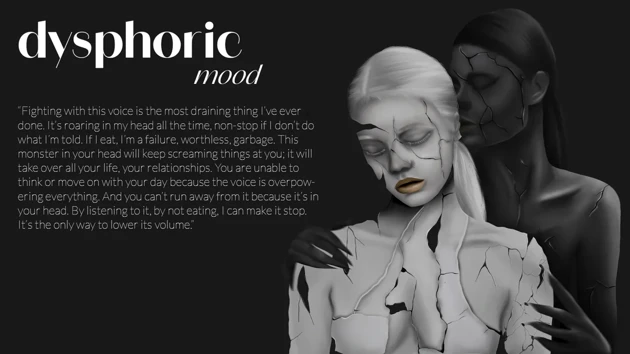
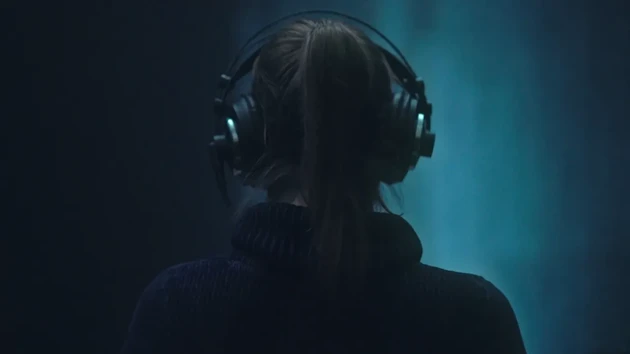
Experiences must be lived to effect real change: It is hard to understand and empathize with something one has never encountered firsthand
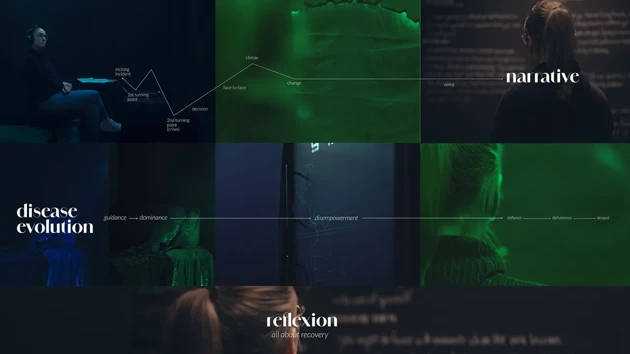
The storytelling viewed from the traditional filmmaking perspective and the evolution of the power dynamics between the voice and the patient

Room1 - Decadency: participants passively witness the journey from the initial inner voice emergence to disempowerment, evoking overstimulation, and longing for silence
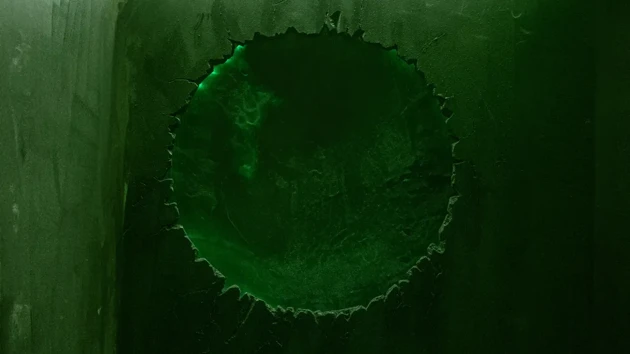
Room 2 – Face to face: The participants have the opportunity to ask 3 questions to Ana, who answers following the wizards of oz techniques
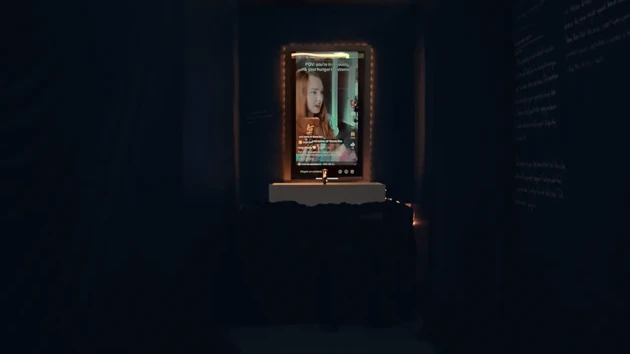
Room3- Public bathroom: A reflective space where participants process their experiences, where recovery what it means and how to support it is the center
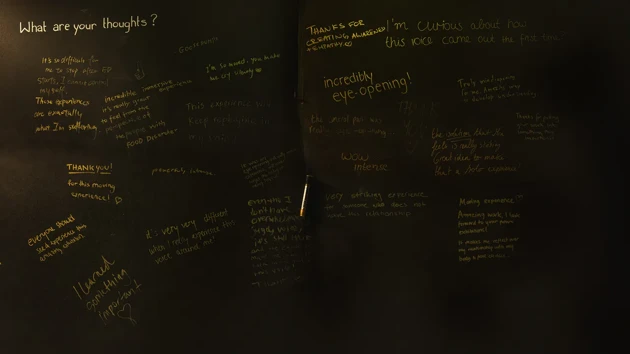
Relaxions left in the walls of the bathroom by the participants that went thru the experience

Color script: Color evolution thought the experience. From the darkness of the beginning, the poisoning of the voice, to the gold of recovery










